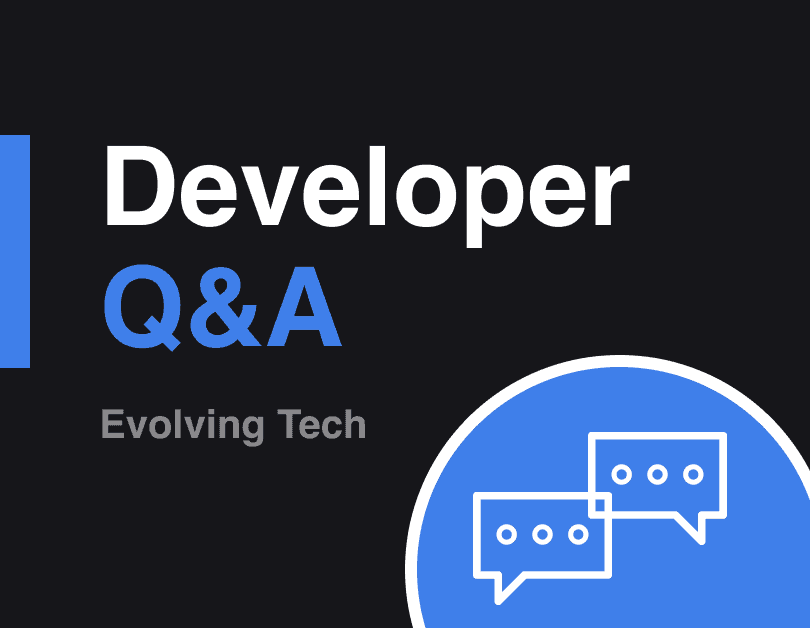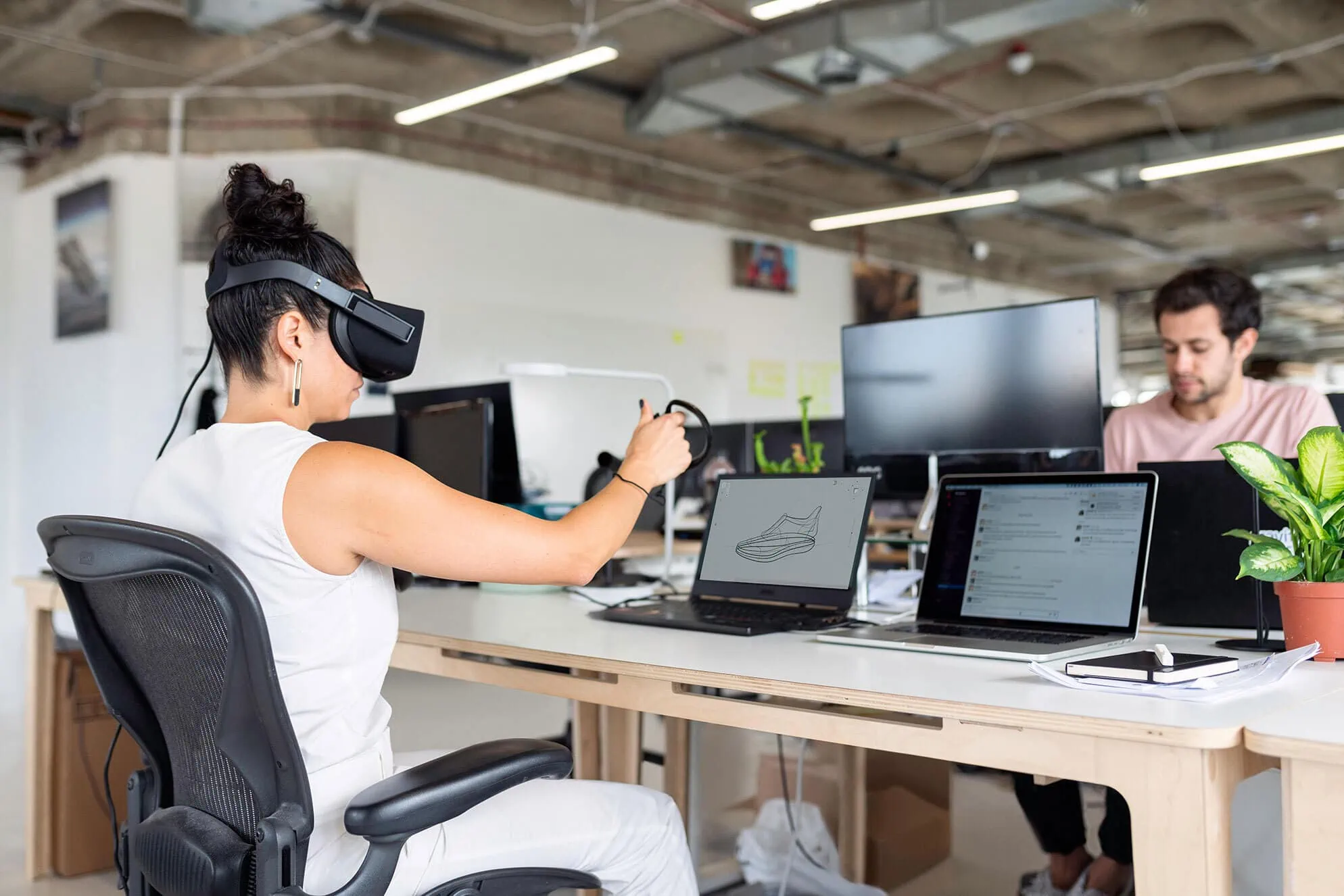
This article was originally written for and published in The Construction Specifier
***
Despite the ongoing debate about remote versus in-office work, the genie cannot be put back into the bottle. The pandemic sparked lasting changes to how and where people work. As a result, companies are rethinking their need for space, asking different questions about how to use the space they have, and seeking guidance on how to build for the future.
Yet, the pandemic is not the only catalyst for transforming new workspaces. The affordability of, access to, and growing reliance on technology are significantly reshaping the offices of tomorrow. This will also transform the education and collaboration needed for planning, designing, and building these spaces.
Those who have a role in designing, building, planning, or influencing these projects need to stay on top of the ever-shifting design landscape. Success in this tumultuous environment may come through adopting a more flexible and collaborative approach that meets the needs of a hybrid workforce.
Planning for a hybrid workforce
The advent of a “hybrid-first” office space is probably the most far-reaching transformation to consider when thinking about the future of offices.
Research shows employees overwhelmingly prefer a blended work model. A 2021 Prudential Pulse of the American Worker Survey showed 87 percent of respondents want to work from home at least one day of the week, and 68 percent of North American workers say the ability to work remotely and on-site is the perfect work model.
When it comes to building new or retrofitting current office spaces, it is helpful to start with the layout. Rather than the traditional cube layout or a series of closed-door offices, many organizations are exploring a greater variety of spaces and styles. Many businesses opt for smaller, private pods which individuals can use for calls or quiet thinking spaces, along with movable desks and common working areas. Some companies are modeling this more flexible layout after co-working spaces. They offer their employees access to different types of spaces that better fit the different ways people work. For planners and architects, this means thinking about space in terms of zones.
Hot-desking is another trend shaping a hybrid-first design approach. Like a more traditional co-working space, employers give their employees the opportunity to secure a desk, office, or room for the days they are in the office.
It is helpful to remember the move to a hybrid work model is about embracing trade-offs. While employees desire the flexibility of hybrid, it is not realistic for a business to have spaces that are only being used 30–50 percent of the time. Hot-desking and flexible seating are an important part of maximizing shared or rotating space
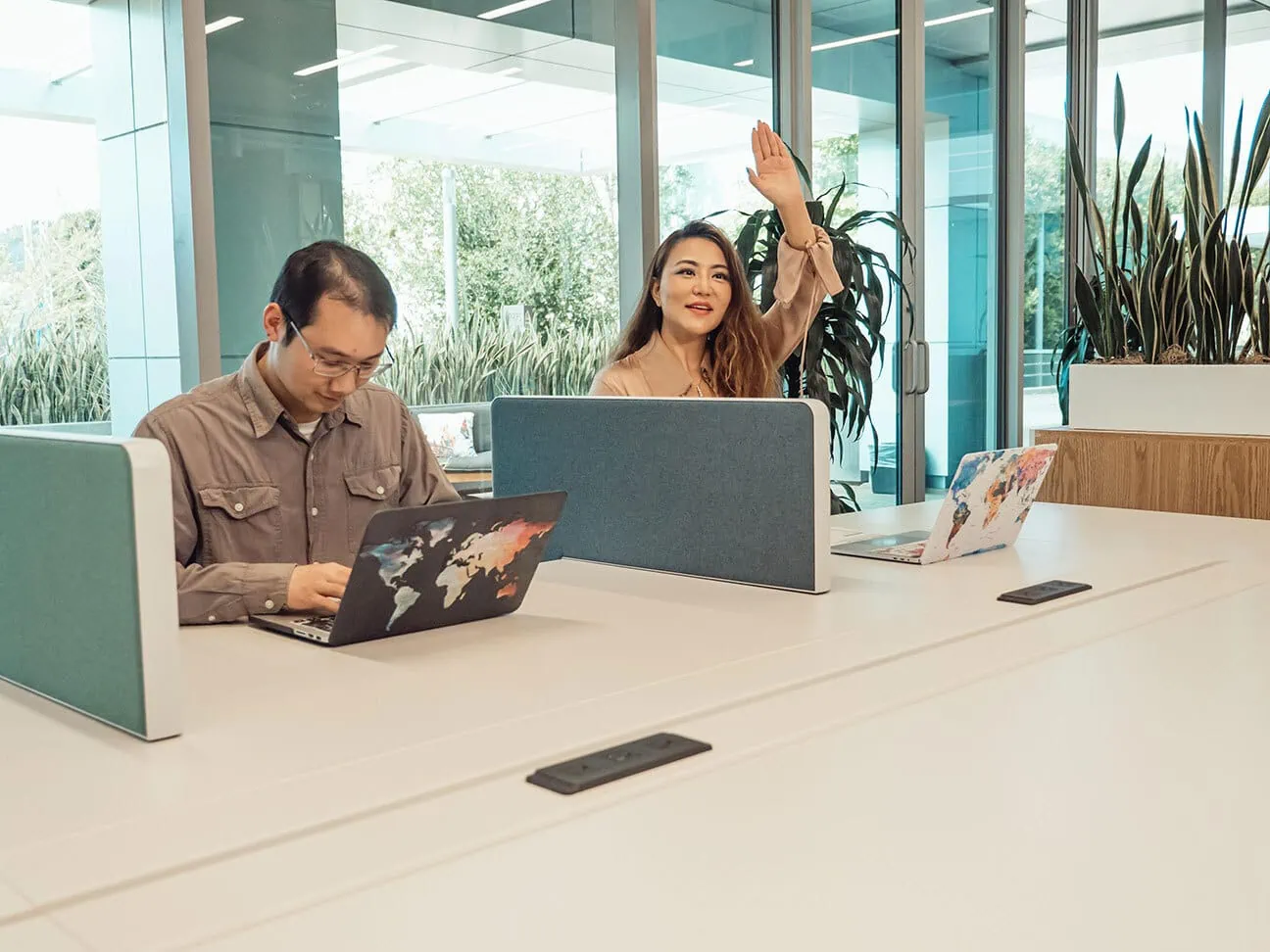
Conference rooms take center stage
Another important consideration of the “hybrid-first” office model will be conference rooms. Going forward, it is more likely for at least one person to join a meeting remotely.
As a result, organizations must think differently about how they design, build, and equip these spaces. Lighting takes on a new importance when considering its relationship with cameras and screens. Conference room acoustics are also playing a bigger role in how professionals plan these spaces. Soundproofing and speaker installations will become standard, along with decisions about flooring, which could impact sound quality.
Likewise, high-quality video and audio capabilities should be discussed at the onset of the project. More electronic connectivity also means more cables and outlets because everyone needs to charge their devices.
For some hybrid-first businesses, it may be worth asking whether a board room or multiple conference rooms are even necessary. Between the ease and popularity of renting space and the addition of Zoom rooms, companies may start re-evaluating large meeting rooms. Some developers have also started introducing common spaces that are shared among tenants. This is becoming increasingly common with training centers and board rooms.
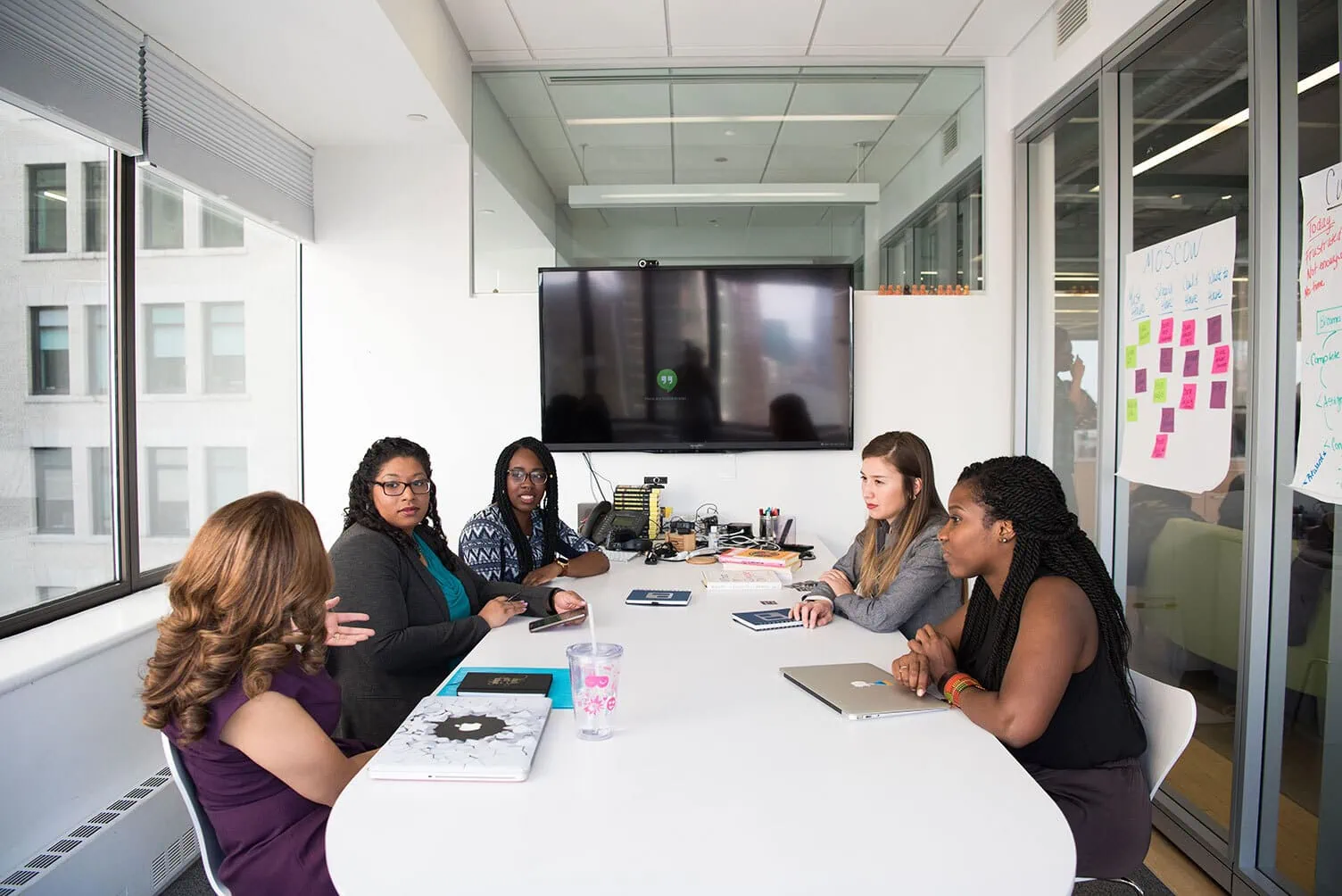
Creating a Digital Concierge
There is also a more personal aspect to the future office workspace in form of the Digital Concierge.
The Digital Concierge is the central hub for the hybrid office. Employees can scan their badge or a QR code to select or reserve their temporary workspace, get a list of meetings, or access a smart locker. Many companies are also trying to blend more culture-building and information sharing into these spaces.
The introduction of the Digital Concierge is a great example of where the hybrid work model meets advancements in technology. Creating the office of the future means replacing outdated technology with new tools that better serve a rapidly changing workforce.
Takeda, a leading pharmaceutical company, for example, has created a virtual show and tell, where employees can virtually share something about themselves, their work, or their hobbies with their teammates. Employees can also scan the project to get details or be linked to a microsite to learn more.
For developers and planners, the goal is to rethink the lobby or welcome center with digital aspects in mind. It is no longer about the physical waiting space, rather, it is about what designers can do with this space to engage people with the brand on and offline.
“With the use of artificial intelligence (AI), 3D modeling, video, and touchscreens, companies have an opportunity to transform the way people interact with their physical spaces.”
The convergence of physical and digital
The idea behind establishing the Digital Concierge is shaping the welcome experience for employees and visitors. It is about creating greater efficiency for the hybrid workforce, and for some brand leaders to experiment how much they can weave digital into the entire office experience.
The important thing to note here is it is about more than just adding technology. With the use of artificial intelligence (AI), 3D modeling, video, and touchscreens, companies have an opportunity to transform the way people interact with their physical spaces.
Aramark, for example, established a curated building tour which blends the use of physical displays with touchscreens, allowing visitors to interact with the organization’s services at every turn.
In lieu of the traditional conference room meet and greet, clients are immersed in a pre-designed brand tour. Beginning with a personalized welcome experience, clients are then guided around the building, stopping at various digital touchscreens for short videos, 3D displays, and demonstrations.
The layout of the building accommodated to allow for this type of experience. Flat screens were strategically located so employees and customers were regularly engaging with the brand. This is another time when referencing zones can be helpful.
Even in a smaller office design, designers can create experiences to enable employees and visitors to jump between a physical screen or monument and our phones and laptops. They have an opportunity to engage people not just while on site, but to extend the experience to before they arrive and after they leave.
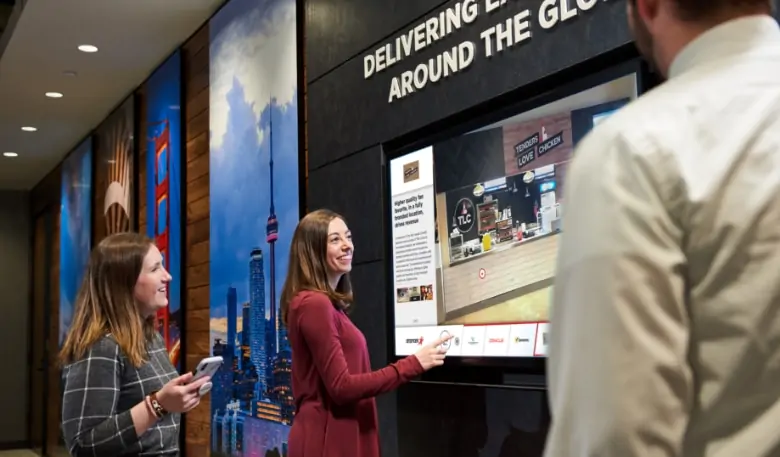
Collaboration and the future of office design
Ownership in office design and planning is somewhat fluid today. While there may be a single point person who oversees the project, they are in constant communication with the architect, builder, specifier, designer, engineer, information technology (IT), marketing/ad agency, and digital team. Everyone has something to contribute.
Therefore, it is important to start with a clear vision and build a workflow which ultimately brings the vision to reality. However, along the way, different viewpoints will be needed. The building must be structurally sound and built within the guidelines of the province and municipality. It also needs
to meet certain aesthetic requirements based on the brand, budget, and functionality.
Other important considerations include how to integrate technology into the physical space in a foundational, accessible, and easy to use way. While architects are focusing on building with Americans with Disabilities Act (ADA) compliance, the digital design team may be able to help think through height requirements for digital signage or the integration of digital track pads.
Digital infrastructure
When designing a “digital-first” office, careful planning is key.
Companies around the world are testing new office design models to better meet the needs of the changing work styles. The innovation is exciting, but it is important to recall user experience is directly related to the infrastructure that supports it. Over the years many great ideas have failed due to lack of planning. Without a strong Wi-Fi signal, for example, guests will not be able to sign in or to download the files needed for a tour.
As specifiers, builders, and architects, it is critical to determine the right structural support for the creative design. This means thinking ahead about size, energy, and climate needs for the server room and the server room’s proximity to screens, workspaces, or the digital hub.
Security, while not a physical design element, should also be considered. This includes ensuring proper IT security is in place. Maintenance is another important factor. While digital tools can create efficiency, devices inevitably break or age out of use. Integrating technology into design also means planning for power sources, possibly charging stations, and maintenance needs.

An eye toward sustainability
When discussing the shift towards hybrid work or a digitally equipped office, there is always a conversation about the environment, which is why builders and specifiers should approach various stakeholder groups to help decide upon means to improve sustainability measures.
This applies to how materials are sourced and selected as well as the digital tools that can reshape a company’s environmental footprint. More companies are shifting to smart tools that provide more efficient energy management. The size and orientation of a copy room as well as storage needs have changed as people move to paperless workflow and online document management.
There are a host of green measures which can be incorporated into the planning, building, and design process. However, the key to thinking through the office of the future may lie in embracing a hybrid-first mindset and looking to new advancements in technology to achieve these goals.
Conclusion
While office workers are not commuting in flying cars like The Jetsons (yet), they are already witnessing major shifts in how their companies plan for a change in the workspace through design and the role technology plays in it.
Today, builders, architects, and specifiers have an exciting opportunity to work alongside business leaders to help reimagine the office space from a new angle and to create more functional and flexible spaces for a dynamically changing workforce.
Looking for an experienced partner to help you navigate the convergence of digital and physical space? Reach out to us at [email protected]



